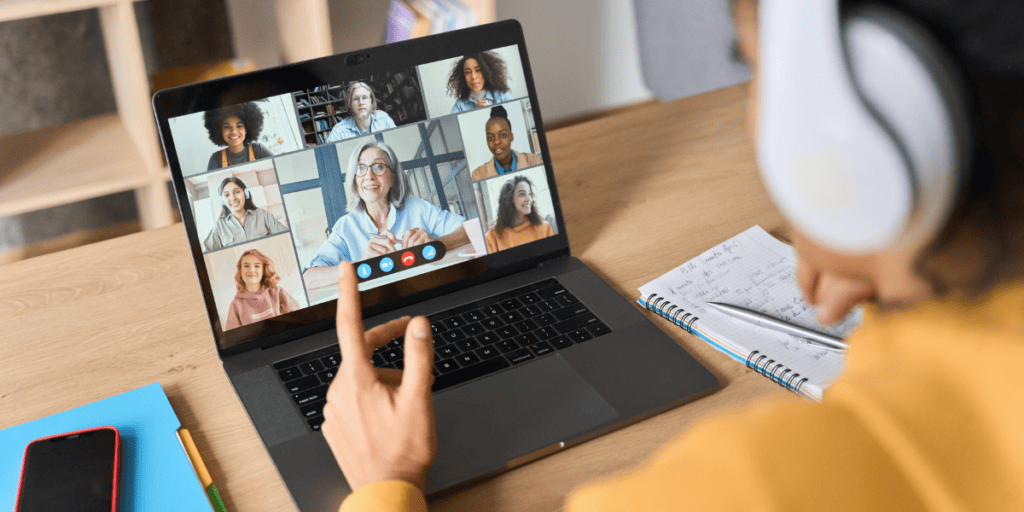The goal of interviewing users is to learn about everything that might influence how the users might use what you’re creating. Good interviewing is a skill you develop with practice. The great myth is that you need to be a good talker. Conducting a good interview is actually about shutting up. This can be very hard, especially when you’re enthusiastic about the topic.
Remember, the people you’re interviewing want to be liked. They want to demonstrate their smarts. When you’re interviewing someone you know nothing. You’re learning a completely new and fascinating subject: that person.
Preparation
Once you have established who you want to talk to and what you want to find out, create your interview guide. This is a document you should have with you while you’re interviewing to ensure that you stay on topic and get all of the information you need.
The interview guide should contain:
- The brief description and goal of the study. This is for you to share with the participant and use to remind yourself to stay close to the topic.
- The basic factual or demographic questions for putting the participant’s answers in context. These will vary depending on the purpose of the interview, but often include name, gender, age, location, and job title or role.
- A couple of icebreaker or warm-up questions to get the participant talking. Most people know this as “small talk.” Feel free to improvise these based on the demographic information.
- The questions or topics that are the primary focus of the interview.
You should also gather a bit of background information on the topic and people you’ll be discussing, particularly if the domain is unfamiliar to you. Talking to homeowners about how they selected their mortgage brokers? Read up on mortgages. Sitting down with the head of customer service? Review the support forums or frequently asked questions.
Interview structure: three boxes, loosely joined
An interview has three acts, like a play or a spin class: the introduction and warm-up, the body of the interview, and the conclusion.
INTRODUCTION
Introduce yourself with a smile, expressing genuine gratitude that the person you are interviewing has taken the time to talk (even if they’re getting a large incentive and especially if it’s a busy staff member who has taken time out of their workday).
Describe the purpose of the conversation and the topic without going into so much detail that you influence the answer. Explain how the information will be used and shared. Obtain their explicit permission to record the conversation.
Ask whether they have any questions about the process.
Move on to the demographic information or facts you need to verify. Use the collection of this information as the basis for the warm-up questions.
“Oh, you live in San Diego. What do you like to do for fun there?”
BODY
Once you’ve covered the formalities and pleasantries, it’s time to dig into the interview meat. With a sufficiently talkative subject, you might get all of the answers you wanted and more without asking more than the initial question directly.
Ask open-ended questions that encourage the subject to talk, not closed questions that can be answered with “yes” or “no.” (Closed question: “Do you communicate with the marketing department often?” Open question: “Tell me about the internal groups you communicate with as part of your job.”)
If the subject doesn’t offer enough information on a topic, ask a follow-up or probing question, such as “Tell me more about that.”
Allow pauses to let the story through. Silence is uncomfortable. Get used to it and don’t rush to fill gaps in the flow of conversation. You want your subject to do that.
Use your list of questions more as a checklist than as a script. If you read the questions verbatim, you’ll sound like a robocall survey.
CONCLUSION
Once you have the information you were looking for, and hopefully even more, make a gentle transition to the wrap-up. Say something like “That’s it for my questions. Is there anything else you’d like to tell me about what we discussed?”
Thank them for their time and cover any administrative topics such as incentives or next steps on the project.
Don’t be afraid to shut it down early if you find yourself in an unproductive interview situation. Sometimes an interview subject goes taciturn or hostile. It happens and the best thing you can do is move on to the next one. There is no rule that says you need to hang in until you’ve attempted to have every single one of your questions answered.
Just do your part to remain friendly and respectful to the end.
Conducting the interview
You, the interviewer, play the dual role of host and student. Begin by putting the participant at ease with your demeanor. The more comfortable a participant feels, the more and better information you will get. A relaxed participant will open up and be more honest, less likely to worry about putting on a good impression.
Once you’ve done your part to get the subject talking, get out of the way. You should strive to be a nearly invisible, neutral presence soaking up everything the other person has to say. Think of them as the world’s foremost expert on themselves, which is the all-absorbing matter at hand. Insert yourself only when necessary to redirect back on topic or get clarification. You will know when your interview is going particularly well because you won’t be able to get a word in, but you will be getting answers to all your questions.
BREATHE
It’s easy to feel like you’re on stage and tense up without realizing it. Your own tension can be contagious, so remind yourself to breathe and remain relaxed and observant.
PRACTICE ACTIVE LISTENING
As long as you’re breathing, make interested mm-hmm sounds. If you’re interviewing in person, make sure to look at the speaker directly and nod. Unrelated thoughts might start to pop up, especially if an answer goes on at length. Stay alert and focused on the other person.
KEEP AN EAR OUT FOR VAGUE ANSWERS
You want details and specifics. Always be ready to bust out a probing question such as “Why is that?” or “Tell me more about that.”
AVOID TALKING ABOUT YOURSELF
Sometimes, what starts as active listening turns into, “Let me tell you about a similar experience I had….” The interview isn’t about you or your opinions. This can be very hard to remember and takes practice to avoid. So, if you find that you’ve inserted yourself into their narrative, just stay relaxed and steer the conversation back on track.
HANDY CHECKLIST
This checklist for effective user research was adapted from the Ethnography Field Guide produced by the Helsinki Design Lab, powered by Sitra, the Finnish Innovation Fund (https://bkaprt.com/jer/10/):
- Create a welcoming atmosphere to make participants feel at ease.
- Always listen more than you speak.
- Take responsibility to accurately convey the thoughts and behaviors of the people you are studying.
- Conduct your research in the natural context of the topic you’re studying.
- Start each interview with a general description of the goal, but be careful of focusing responses too narrowly.
- Encourage participants to share their thoughts and go about their business.
- Avoid leading questions and closed yes/no questions. Ask follow-up questions.
- Prepare an outline of your interview questions in advance, but don’t be afraid to stray from it.
- Whenever possible, snap photos of interesting things and behaviors.
- Also note the exact phrases and vocabulary that participants use.
- Pay attention after you stop recording. You might get a valuable revelation.
Try to be as conversational and natural as possible. If the user volunteers the information in the course of your conversation without you having to ask, that’s terrific. Your questions are just prompts to help the participant tell you a story that reveals situations, attitudes, and behaviors you didn’t even think to ask about. Offer enough information to set the scope for the conversation, but not so much that you influence the response.
Here is a sample set of questions, based on our museum website design example, for you to modify to meet your needs:
- Tell me about your job.
- Walk me through a typical week in your life.
- How often are you online?
- What computers or devices do you use?
- When do you use each of them?
- Do you share any of them?
- What do you typically do online?
- What do you typically do on your days off?
- How do you decide what to do?
- Tell me about how your children use the internet.
- How do you decide what to do on your days off with your kids?
- What are your particular non-work interests? What do you read online besides the news?
- How frequently do you visit museums in your town? Which ones?
- What prompts you to go?
What to do with the data you collect
The interview is the basic unit of ethnographic research. Once you’ve completed your interviews, analyze them all together to find themes, including user needs and priorities, behavior patterns, and mental models. Note the specific language and terms you heard so you can better reflect the way users think and talk in the actual interface. If you are doing generative research, look to the needs and behaviors you discover to point out problems that need solving. Turn the clusters around user types into personas that you can use for the life of the product or service you’re working on.


